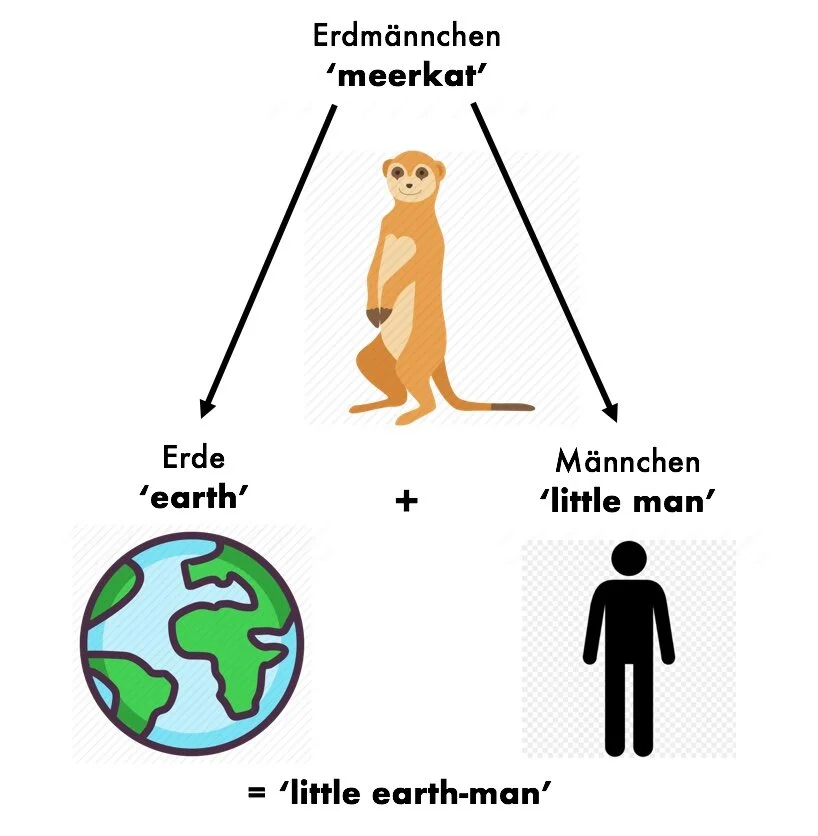Nihongoing 日本語イン Verb Inflection, Part 2: L o s t - C o n s o n a n t V e r b s
Arashiyama Bamboo Forest, Japan.
Hello Nihongo-ers!
Today we’ll continue our tour of Japanese verb inflection (for Part 1 see here). But first, have you ever wondered about any of these curious facts about Japanese language?
The voiced sound /g/ is written by modifying a /k/-graph, /z/ by modifying an /s/-graph, and so on, giving pairs of voiced and voiceless sounds (k/g, s/z, t/d) written with the same basic shape. But in one case, it’s a trio rather than a pair: /h/ is written with the unmodified character forms (は ひ ふ へ ほ); voiced /b/ with the usual two dots in the top right (ば び ぶ べ ぼ); and voiceless /p/ with, uniquely, a small circle added (ぱ ぴ ぷ ぺ ぽ).
The name of the country, 日本, is pronounced in two ways: modern にほん Nihon or the older にっぽん Nippon.
In reduplicated words with medial voicing, /h/ shows up where we would expect a /p/. Consider 国々 kuni-guni ‘countries’ (kuni reduplicated), 時々 toki-doki ‘sometimes’ (toki ‘time’ reduplicated) versus 人々 hito-bito ‘people; everybody’ (hito ‘person’ reduplicated). The sign 々 (ditto) in these spellings indicates reduplication.
When contraction occurs via the loss of a word-internal vowel, an initial /h/ in the second component is replaced by /p/. The numerals 六 roku ‘six’ and 八 hachi ‘eight’ combine with 百 hyaku ‘hundred’ to give 六百 roppyaku ‘600’ and 八百 happyaku ‘800’ (rather than the unacceptable *rohhyaku, *hahhyaku).
Modern Japanese spelling is wonderfully consistent, but one odd detail is that the topic-marking particle pronounced [wa] is always written は, which otherwise is always pronounced [ha]. Similarly, the kana へ is usually [he], but when it writes the postposition meaning ‘toward, directed at’ it is read as [e] (with a zero initial consonant).
In all these quirks, we see that there is some kind of affinity of the sound /h/ (a glottal fricative) for the bilabial consonants /p/ and /b/. We may note that the sound /p/ seems to be dispreferred in Sino-Japanese and native Japanese words (it is much more frequent in onomatopoeia and recent loanwords): we see no examples of a single /p/ in the onset of a word but plenty of cases of a double (geminate) /p/ in the middle of a word (Nippon, roppyaku). Note further that though /h/ is common in word onsets, it is rarer medially, and it is the only voiceless consonant which cannot be doubled (i.e., there are words and compounds with -pp-, -tt-, -kk-, -ss- [and even -dd-!], but no -hh-).
I don’t want to offer an explanation for these phenomena at this stage. I believe they are connected to the oddness in the one class of verbs I left out of the last post, so I will present all of those details and offer my explanation for the apparent irregularity at the end.
Verbs in this odd class include 言う i-u (‘to say’, column [1] in Table 1) and 買う ka-u (‘to buy’). The dictionary form of these verbs uniquely ends in う -u rather than the final る -ru seen with vowel-final verb stems. Inflected forms of ‘say’ are shown in Table 1 alongside one vowel-final (column [2]) and one consonant-final verb (column [3]).
Table 1. Sample verbs of three major classes.
THE PROBLEM
The question that faces us as learners and analysts is, what is the basic form of the verb stem meaning ‘say’? For comparison, the root for ‘be’ in Table 1 is clearly /i-/: every form begins with it, and it never changes its form. In the forms of ‘cut’, we find either /kir-/ or /kit-/ as the stem (the second really ending in the long consonant written っ), but note the distribution: /kir-/ is the shape when any vowel follows, while /kit-/ appears only before a suffix with an initial /t/. Since an /r/ becoming a /t/ is a natural sound change when /t/ immediately follows (assimilation: one sound becomes more similar to another sound), we can derive the shape /kit-/ from an underlying /kir-/ with a simple rule.
But in forms of ‘say’, we lack such clarity. Here we find three variants of the stem: (1) /it-/ when a /t/-initial suffix follows, (2) /iw-/ with a suffix beginning with /a/, and (3) /i-/ with all other suffixes. Which one is basic? We can rule out the third form: the verb ‘be’ has a stem of that shape, and why would speakers insert two unrelated consonants, /t/ and /w/, to a vowel-final verb stem, when the inflection of vowel-final verbs is so simple and straightforward?
If variant (1) were basic, we would be faced with a change of /t/ to [w] when the vowel /a/ follows. This type of adjustment makes no sense phonetically (/w/ is made with the lips while /t/ involves the tip of the tongue touching behind the teeth). Moreover, we saw /t/-final verbs such as matsu ‘wait’ in the last post, where the following /u/ of the suffix shifts the /t/ of the stem to [ts] (matsu = mat+u).
If variant (2) is basic, we would need to say that /w/ becomes [t] when /t/ follows--which is a bit unusual, but not outrageous. We haven’t seen any verb stems ending in /w/, so thus far this seems like the best candidate.
A SOLUTION
I propose that the basic form of the verb ‘say’ is neither /iw-/ nor /it-/, nor /i-/, but some fourth thing which we have not yet seen. Recall the many oddities of Japanese spelling and sound changes I mentioned at the beginning of this post, particularly the spelling of the particles は wa and へ e. What this suggests to me is that these two particles were, at an earlier stage of Japanese, pronounced differently from their modern readings: they had an initial consonant that has shifted.
For an example of this type of consonant shift from the prehistory of English, see here on Grimm’s Law.
Table 2 shows the inventory of Japanese consonant phonemes which can begin a syllable. Rule-governed variants, or allophones, such as [sh] for /s/ or [ts] for /t/, are not shown. Sounds shown in blue are voiceless, voiced in red.
Table 2: Onset consonant phonemes of Japanese, classified by place and manner of articulation.
As I noted above, there are certain gaps in the native verbs of Japanese:
A verb may begin with /h/, but none has this sound medially or stem-finally.
The stop /p/ does not occur.
If we posit a historical sound change of /p/ > /h/, with certain other developments depending on position within a word or phrase, many of the facts I’ve presented begin to make sense, including the fact that all obstruent consonants (the top two rows in Table 2) occur in pairs, except /h/. The following developments of /p/ seem to have taken place:
Verbs that now begin with /h/ once had /p/ instead, such as hiraku ‘open’, hanasu ‘speak’, from older *pirak-u, *panas-u. (The asterisk * here marks a word-form or pronunciation as reconstructed rather than actually attested.)
Verbs that had a word-medial /p/ replaced it with /w/ when the vowel following was /a/, as in tsukawanai ‘not use’, kawanai ‘not buy’, from older *tukap-anai, *kap-anai.
Medial /p/ was deleted before any other vowel, as in utau ‘sing’ (*utap-u), infinitive ii ‘to say’ (*ip-i).
So to answer the question above regarding the basic shape of the verb stem meaning ‘say’ (with its variant forms i-, iw-, it-), I believe the original form was *ip-, and that all the variants are derived by the straightforward sound changes outlined above, plus an assimilation rule: /p/ becomes [t] when /t/ immediately follows. So an original past-tense *ip-ta became itta; original negative *ip-anai became iwanai; and infinitive *ip-i became *i-i (/p/ deleted medially before any vowel but /a/).
These developments occurred in words other than verbs, of course (it’s just that in most other word-classes, recent loanwords have replenished the stock of words containing /p/, such as the noun pointo ‘point’, borrowed from English). The developments for medial /p/ outlined above allow us to account for the particles e and wa. Since they are not independent words but are confined to the ends of phrases, their original initial consonants developed as word-internal sounds. The topic marker wa must once have been *pa, and the postposition ‘toward’ *pe. The rule is that /p/ became /h/ initially, and medially either /w/ (before /a/) and zero elsewhere.
These sound changes affected only original voiceless /p/; its voiced counterpart was unaffected by this sound change and has remained simply /b/. If we derive the reduplicated 人々 hito-bito ‘people; everybody’ (mentioned above) from an older *pito-bito, that brings it phonetically in line with the other reduplicated forms mentioned above, as shown in Table 3: the initial consonant of the first component is a voiceless stop, and the initial consonant of the second is its voiced counterpart.
Table 3: Reduplicated forms with medial voicing (連濁 rendaku).
Our sound changes involving /p/ apply only to the short consonant; lengthened (geminated) /pp/ remains unchanged. The cause of the alternation 日本 Nippon ~ Nihon may lie in a sporadic simplification of the older, more ‘correct’ Nippon to *Nipon. (Normally the medial /p/ would weaken to zero, but the absolute form 本 hon probably inspired speakers to restore the initial /h/. Note that there is no alternation /h/ ~ zero in the readings of kanji, so a reading on for 本 would likely have been dispreferred.)
OTHER ODD FACTS ACCOUNTED FOR
If we look around some more, we can find more quirks that make sense if we posit the above sound changes affecting older /p/. Consider the variant forms of the Sino-Japanese numeral 十 ‘ten’:
In the expression 十分 ‘10 minutes’, either juppun or (older) jippun (2nd component is 分 fun).
In isolation jū
What unites jū with jup- and jip-? The historical kana spelling reflects an original reading zipu, where /zi/ regularly became [ji] and /p/ became zero (word-internal, following vowel is not /a/). Thereupon the vowels of *jiu underwent an adjustment to (y)ū, giving the isolation form jū. In compounds and phrases like 十分 (zipu+pun), the vowel in the middle tended to delete (zip-pun), bringing the two /p/s into contact, and allowing the long stop /pp/ to survive to the present. The older modern reading, jippun, preserves the original first vowel of zipu, while in juppun the vowel quality of jū has been introduced by analogy.
Other historical kana spellings of native Japanese words, such as かは kaha for modern かわ kawa ‘river’ and さむらひ samurahi for modern samurai, show that the changes to old /p/ applied to both native as well as Sino-Japanese words at that stage of Japanese.
Students of Japanese who have had occasion to learn some Chinese readings (e.g. Mandarin or Cantonese dialects) may have noted that Sino-Japanese /h/ corresponds to the Modern Chinese consonants /p, pʰ, f/, as in the readings shown in Table 4. Note that in Hanyu Pinyin, the official romanization system of the People’s Republic of China, letter <b> represents an unaspirated stop and letter <p> an aspirate; both are voiceless. The oddness of the correspondences is explained by a shift of /p/ to /h/ in Japanese. Note also that what is written as <f> in Modern Japanese is a variant of /h/ when the vowel /u/ follows. The actual sound is a voiceless bilabial fricative (IPA [ɸ]). There is no need to posit a separate change of older /p/ to modern /f/, as there is no phoneme /f/ in Japanese.
Table 4: Sino-Japanese character readings compared with Modern Mandarin, showing the correspondence J /h/ : Chinese /p/ or /f/.
An interesting linguistic parallel is offered by Korean. Here too, a bilabial stop (p) systematically weakens. An important difference is that where the Japanese change was a historical shift, the Korean change is synchronic, meaning it is an active grammatical rule that speakers acquire as a living alternation. A technical term for changes such as this loss of complete closure of /p/ is “lenition”, a Latin word meaning ‘weakening’.
In Korean, all verb roots ending in -p (represented in Hangeul by the letter ᄇ) have a variant where this consonant is replaced by the vowel u or the consonant w ( both written 우). So, from the root of deop-da (덥다) ‘to be hot/warm’ are derived:
by suffixation of +eun (은), an adjectival form deo-un (더운) ‘hot/warm’; and
by suffixation of +eo-yo (어요), the stative verb deo-wo-yo (더워요) ‘X is hot/warm’, where the [w] is the consonantal variant of u.
From the antonym of this root, chup-da (춥다) ‘to be cold’, which also ends in -p, the corresponding forms are:
by suffixation of +eun (은), an adjectival form chu-un (추운); and
by suffixation of +eo-yo (어요), the stative verb chu-wo-yo (추워요) ‘X is cold’.
OVERVIEW
Table 5 reviews all the verbal inflection suffixes we’ve encountered in these first two posts. It includes sample forms of:
vowel-final verb stems (tabe- ‘eat’);
consonant-final verb stems (nom- ‘drink’); and
a lost-/p/ stem (older *kap- ‘buy’, now ka-, kat-, kaw-)
Table 5: Suffixes used in the most frequently occurring verb forms, in ABC order.
SOUND CHANGES
Table 6 reviews the sound changes seen in Japanese verb inflection. Important themes are assimilation (changes in which one speech segment becomes more similar neighboring sound) and deletion (loss of one or more segments).
Table 6: Sound changes relevant to Japanese verb inflection.
Check us out on Facebook, Instagram, Tinycards, and Twitter! Coming soon: LanGo on Reddit.
Twitter: www.twitter.com/langoinstitute
Instagram: www.instagram.com/LanGoInstitute
Facebook: www.facebook.com/LanGoInstitute
Tinycards: www.tinycards.duolingo.com/users/LanGoInst
































Tools for helping you master some of the trickier points of German grammar, whether you’re learning it for the first time or wanting to review the fundamentals. Los geht’s!